Where is Kuwait?
About Kuwait
The Land
The People
Life and Death
Health, Energy and the Environment
Education and Work
Travel, Communication and the Media






Back to the Flags of Asia page

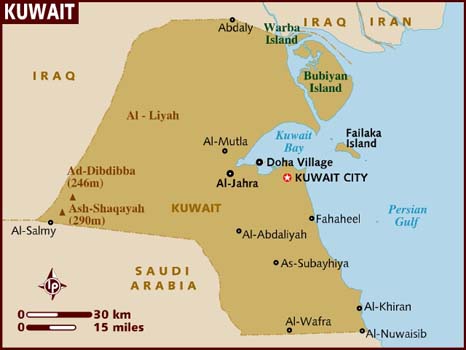


Kuwait is a small country in the south west of Asia.
Kuwait has a border on the Persian Gulf.
The land is a mainly flat and desert.
The geographical coordinates for the centre of Kuwait, also known as lines of latitude and longtitude, are:-
Latitude - 29 30N
Longitude - 45 45E
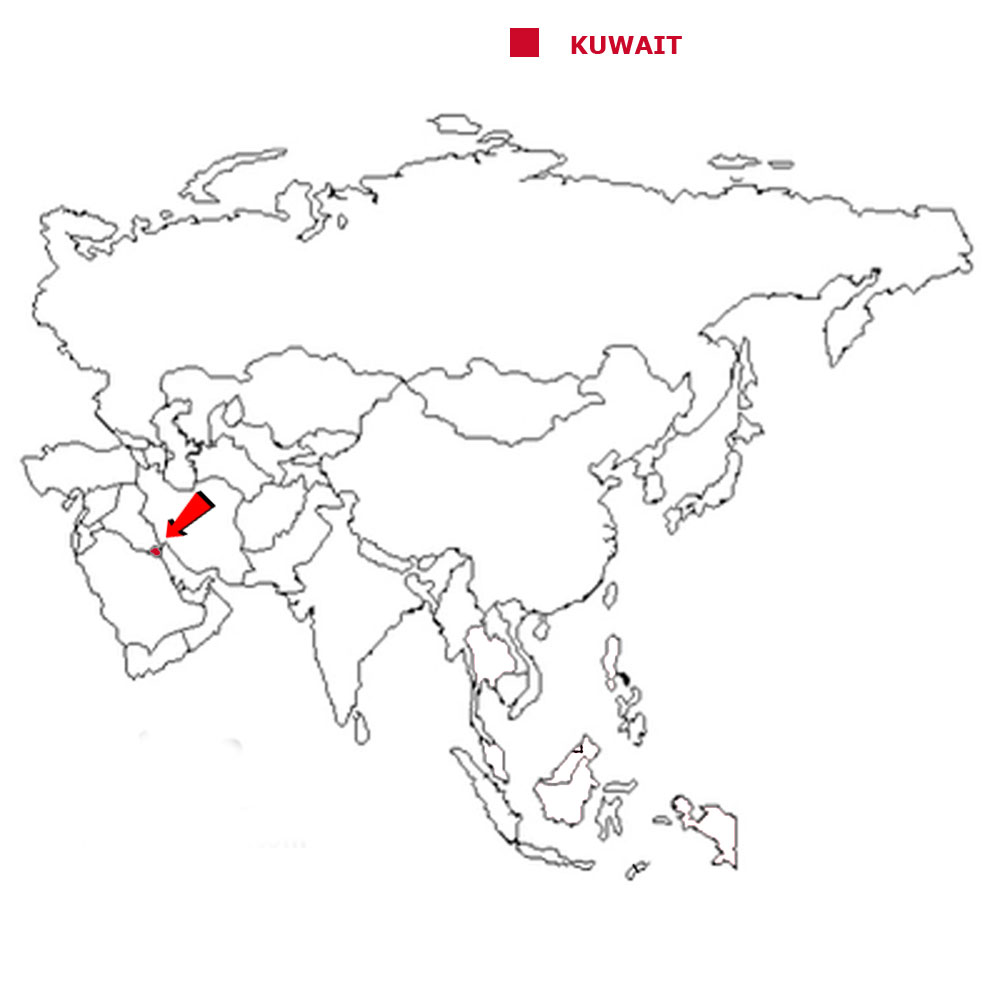

Check the weather in Kuwait City now.
This is the time in Kuwait City now
 The Kuwaiti flag is 3 equal horizontal
stripes of green, at the top, white and red with a black trapezium on the flag pole side.
The Kuwaiti flag is 3 equal horizontal
stripes of green, at the top, white and red with a black trapezium on the flag pole side.
Kuwait is constitutional monarchy with an emir as head of state and head of the government.
In elections everyone over the age of 21 can vote, providing they have 20 years of citizenship.
The currency in Kuwait is the dinar.
Arabic is the official language.
Hear the National Anthem
These are the anthem words
We have already written our own history of England but are asking schools in Kuwait to provide us with a detailed history of
their own country. Check how here.
![]()
![]() Back to the top
Back to the top

The total land area of Kuwait is 17,818 sq kms which is the 41st largest in Asia.
Kuwait has no lakes, rivers and canals.
Kuwait has boundaries with 2 countries
- Iraq 254 kms
- Saudi Arabia 221 kms
Kuwait has a coastline of 499 kms which is the 27th longest in Asia.
The highest point in Kuwait is just west of Al-Salmi Border Post at 300 metres.
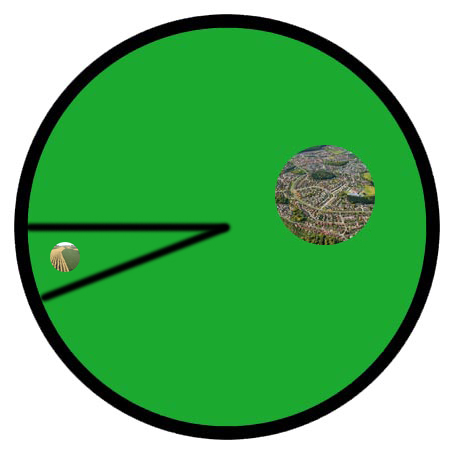

The total population of Kuwait is 2.83 million people, making it the 42nd largest country in Asia by population.
Of this number 1.18 million are females and 1.65 million are males.
A person from Kuwait is called a Kuwaiti.
To be a citizen of Kuwait, one of your parents must be a citizen of Kuwait. It is not sufficient to be born in Kuwait.
The largest five cities in Kuwait, by population are:-
- Al Ahmadi 637,411 people
- Hawalli 164,212
- Sabah as Salim 139,163
- Al Farwaniyah 86,525
- Al Fahahil 68,290
 Each little Owlbut is 1 person and
the big yellow rectangle is 1 sq km. After a while you can compare countries and see which ones are the most crowded. Remember it is only an average as
more people live closer together in towns and cities than in villages out in the country.
Each little Owlbut is 1 person and
the big yellow rectangle is 1 sq km. After a while you can compare countries and see which ones are the most crowded. Remember it is only an average as
more people live closer together in towns and cities than in villages out in the country.
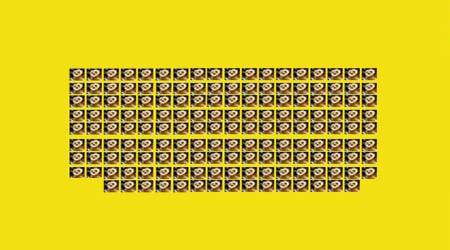
98.3% of the people live in cities or towns.

The birth rate in Kuwait is 19.6 births per 1,000 of population
The death rate in Kuwait is 2.2 deaths per 1,000 people.
Check this against the birth rate. If the death rate is higher than the birth rate then
the population will decrease unless immigrants arrive in the country.
There are 7.4 deaths of girls under 1 year per 1,000 of births and 6.9 deaths of boys.
The median age for females is 27.4 and for males is 30.4. The median age is that age which divides the population exactly in half so there are the same number
of people above the median age as below it.
We have no figures for the average age of a woman when she has her first child.
The elderly dependency ratio is 2.7. This is the number of elderly people (ages 65+) per 100 people of working age (ages 15-64).
The potential support ratio is 37.3. This is the number of working-age people (ages 15-64) per one elderly person (ages 65+). As a population ages, the potential support ratio tends to fall, meaning there are fewer potential workers to support the elderly.
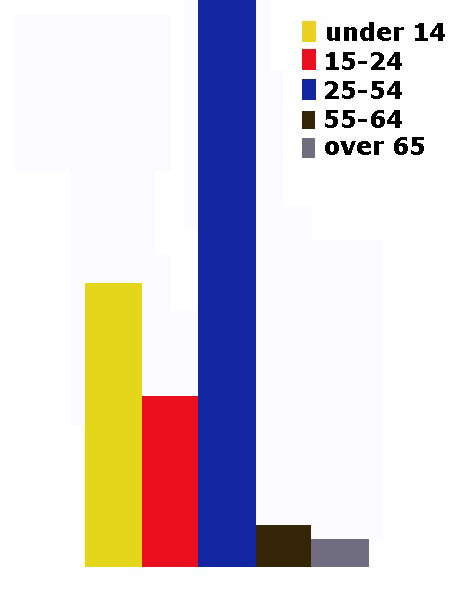
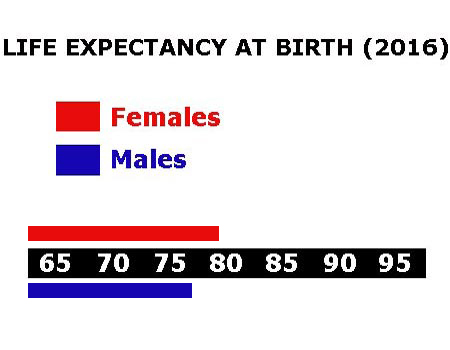

Kuwait spends 3.0% of its total income on health care.
There are 1.79 doctors per 1,000 people.
There are 2.2 hospital beds per 1,000 people.
37.9% of the population are estimated as obese.
99.0% of the urban population and 99.0% of the rural population have drinking water that is either piped into their home or they have access to a public tap, a protected borehole, well, spring or
protected rainwater collection facility.
100% of Kuwaitis have access to a flushing toilet that is connected to a sewer. a pit latrine (that is a
permanent hole in the ground that is looked after) or a composting toilet.
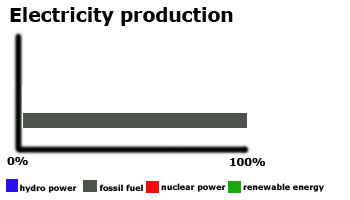
Kuwait releases 107.0 million metric tons of carbon dioxide by burning fossil fuels in the process of producing and consuming energy. This puts it as the 19th highest in Asia.

We have no figures for how much Kuwait spends of its total income on education.
Children usually start school at age 6 in Kuwait. Primary education is for five years until age 11 and secondary education must continue till 15 but can go on to 18/19. This may be followed
by further education at a university or college.
Generally the school year consists of 3 terms and starts in the first week of September and finishes in the middle of June. There is usually a 2 week
break at Christmas and a 1 week break in the se cond week of April. There is also a one week break in the middle of the first term.
94.8% of females and 96.7% of males are able to read and write by the age of 15.
14.6% of all people aged between 16 and 24 are not in work. We have no split for the figures between females and males.
The total number of people available for work in Kuwait is 2.70 million.
We have no figures for which sector they work in.
2.1% of the workforce are unemployed.

There are 4 paved airports in Kuwait, which is the 45th highest number in Asia.
![]()
There are no railways in Kuwait.
![]()
There are 6,608 kilometres of roads in Kuwait, which means Kuwait is in 46th place for the most kilometres of roads in Asia.
![]()
There are 8 major national newspapers in Kuwait.
There are 5.39 million mobile phone users.
14% of the people have a fixed landline.

2.22 million people have access to the internet at home via any device (computer or mobile).


